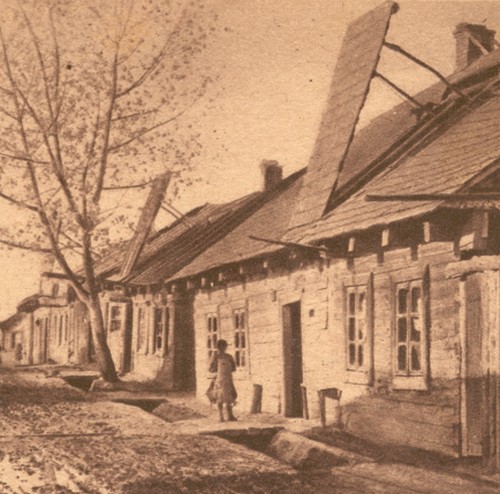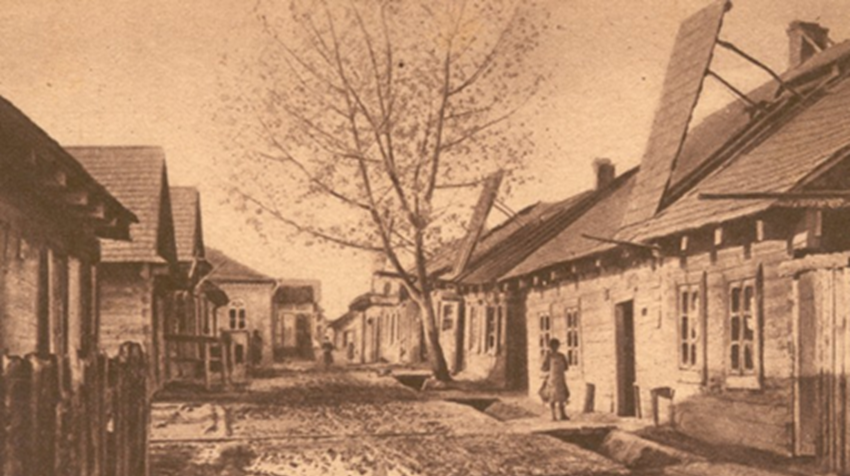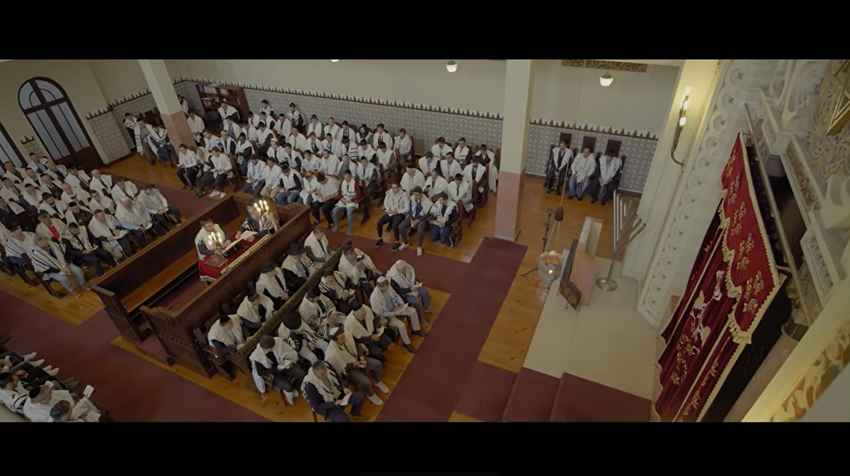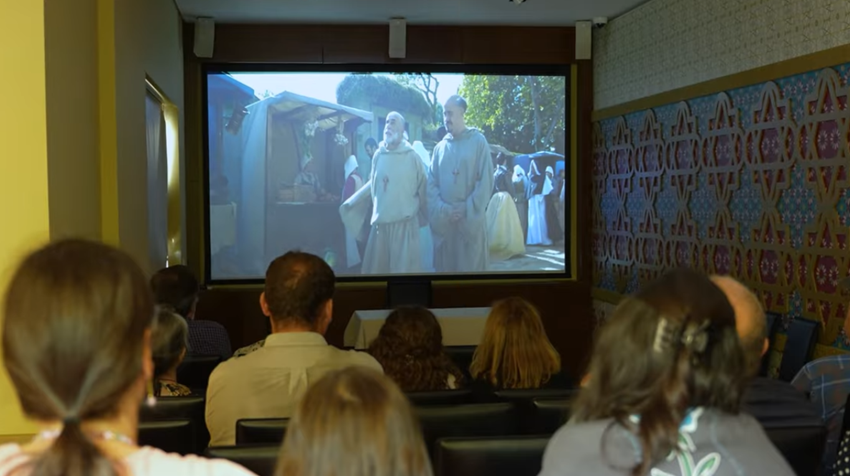From the Folklore Research Center, Hebrew University of Jerusalem, via the National Library of Israel Digital Collection (Publisher: Verlag fur allgemeines Wissen
In 1916, at the height of World War I, a photograph taken in the city of Ivanovo (then part of the Russian Empire, today within Belarus) captured a unique moment of Jewish life in times of conflict. What seems at first to be a simple street scene reveals a remarkable combination of tradition, architectural adaptation, and survival during one of modern history’s darkest periods.
The image shows houses with roofs that could be opened. These unusual mechanisms had a very specific purpose: they allowed Jewish families to place the s'chach — the traditional plant covering — and transform part of their homes into sukkot. In this way, they could fulfill the commandment to dwell in the sukkah during the festival.
Another intriguing detail appears in front of the houses: rectangular ditches dug into the ground. At first glance mysterious, they were in fact makeshift trenches meant to protect residents from stray gunfire, as the war front was dangerously close to the area.

The photograph, most likely taken by an Austrian soldier advancing into Russian territory, was later published as a postcard by a Viennese publisher. While it initially circulated as part of wartime propaganda, today it carries a very different meaning: it shows how, even under the shadow of war, the Jews of Ivanovo sought to celebrate their faith with joy, in keeping with the biblical injunction to “rejoice in your feasts.”
The episode, described in detail on the website of the National Library of Israel, is a powerful testimony to Jewish resilience. Amid trenches and uncertainty, the community refused to abandon Sukkot, proving that even in the harshest of circumstances, tradition and hope endure.


































